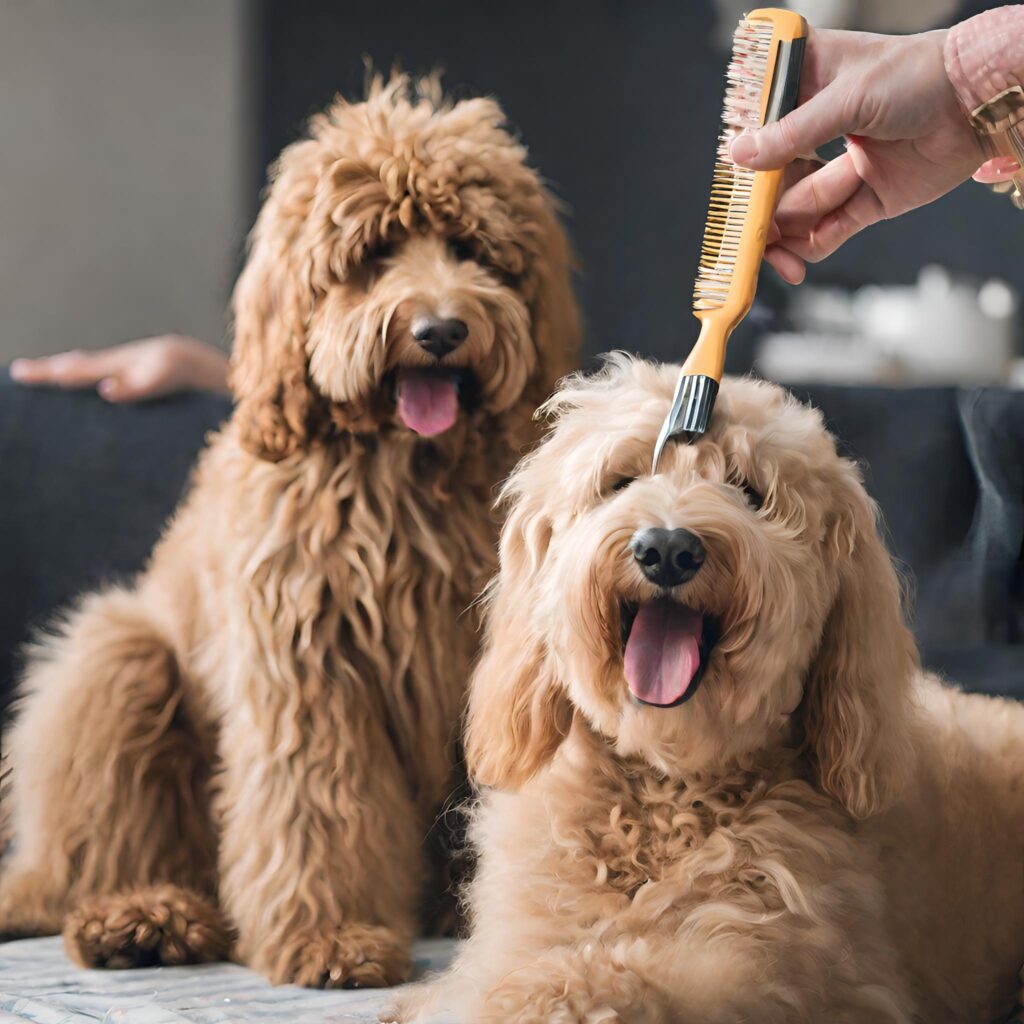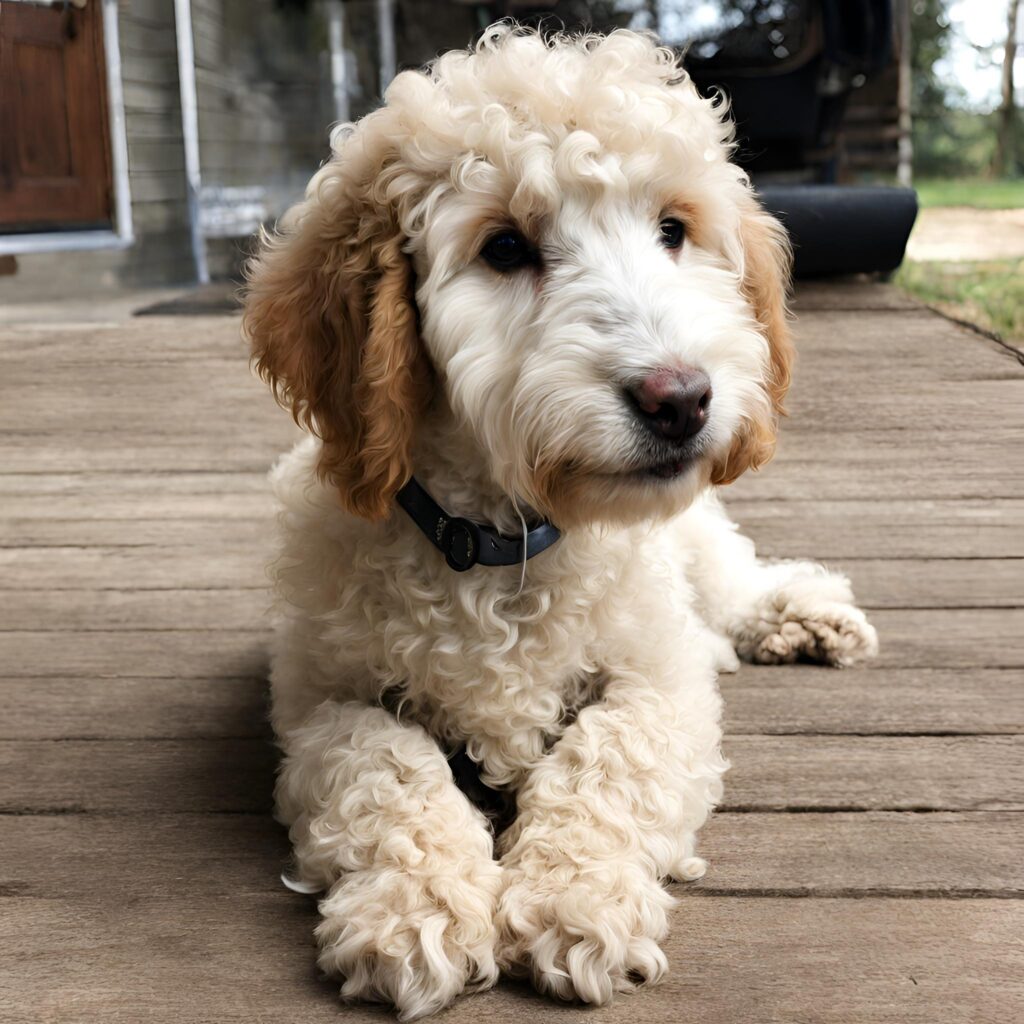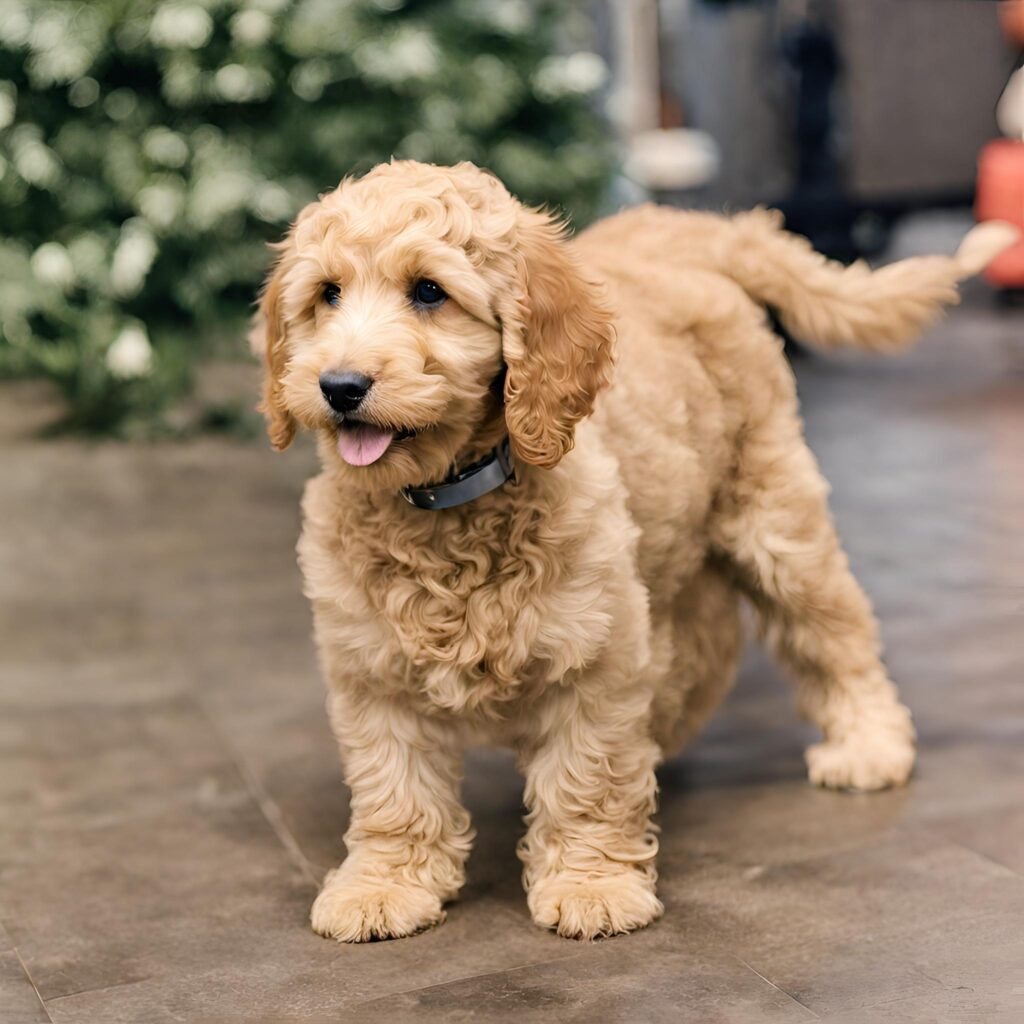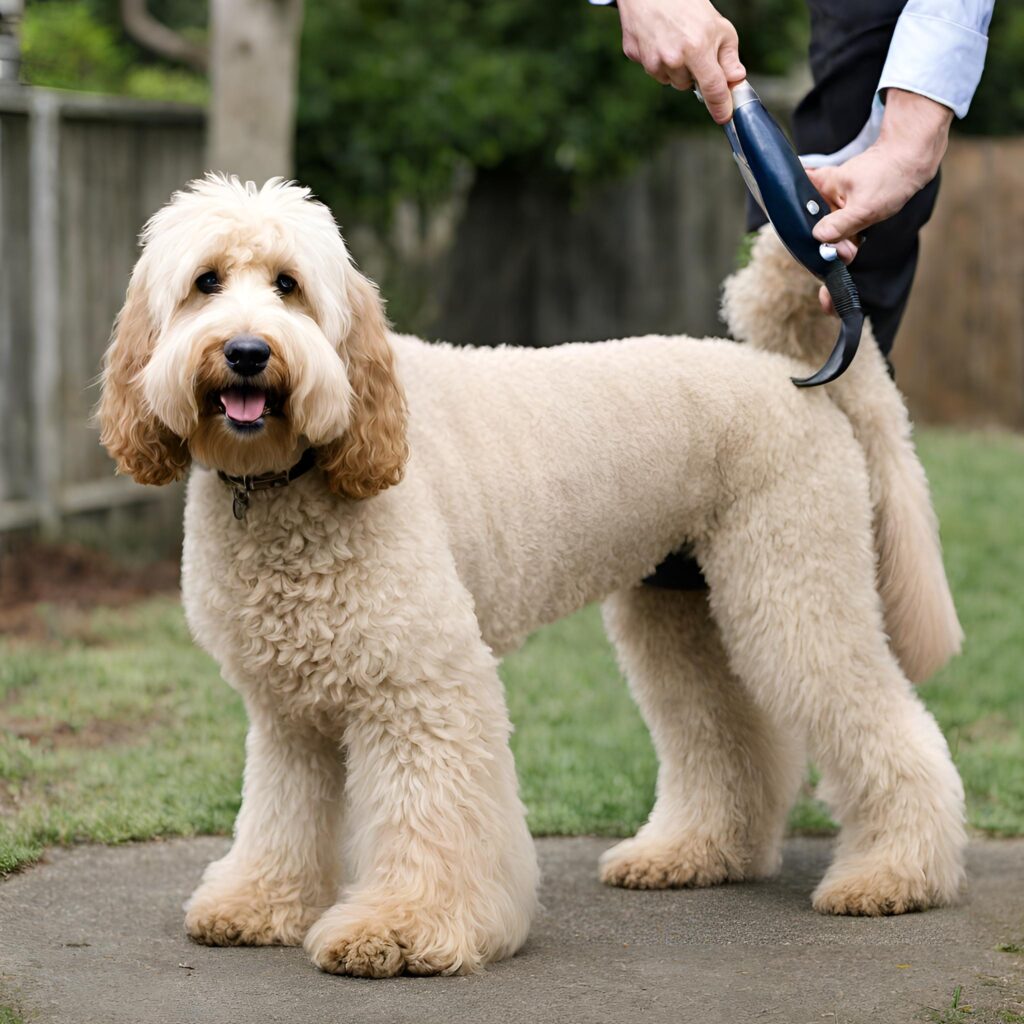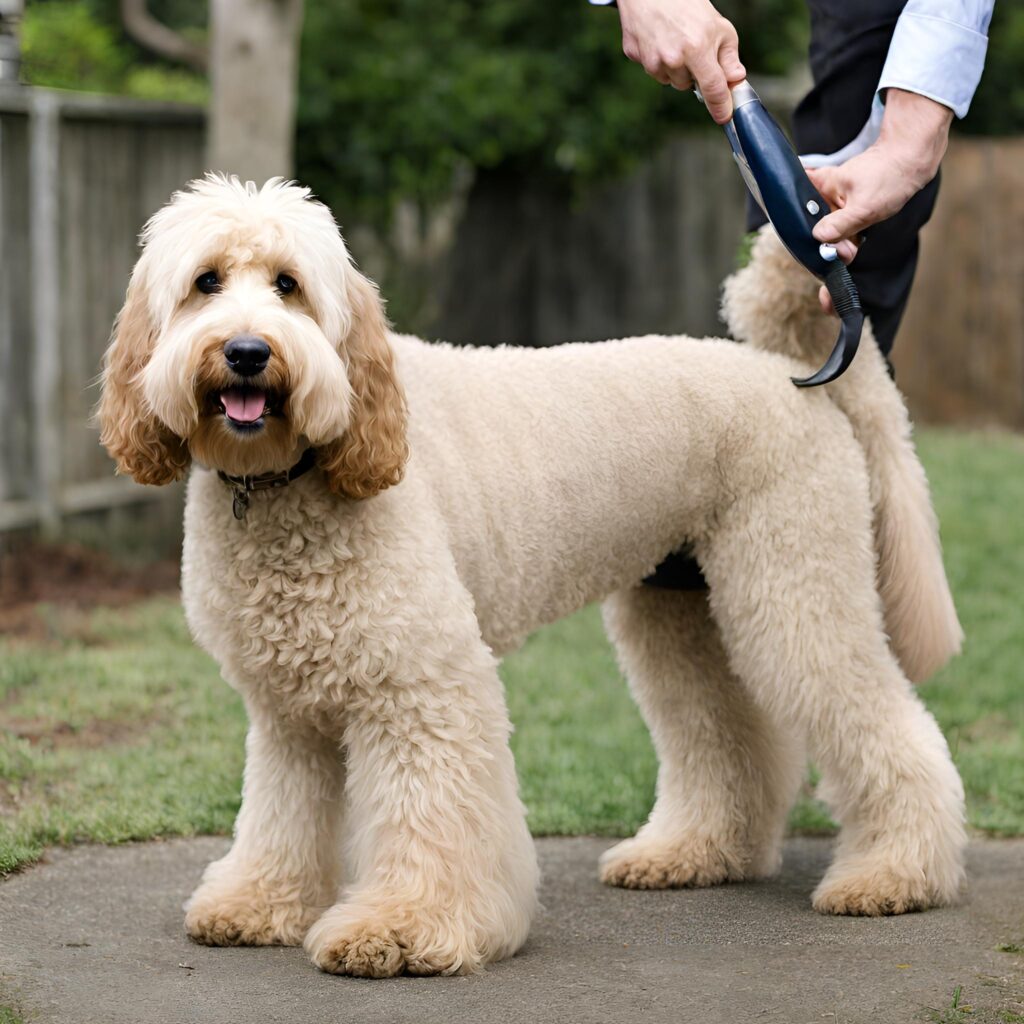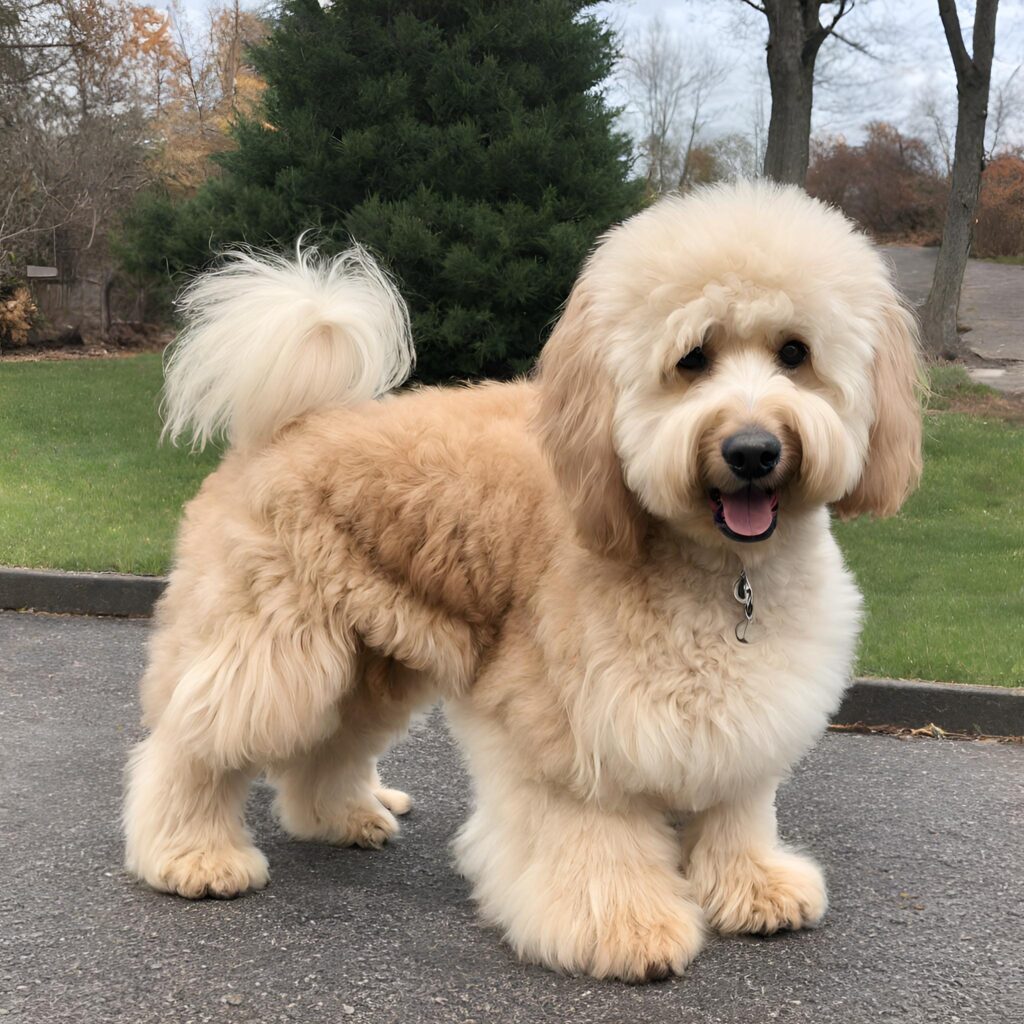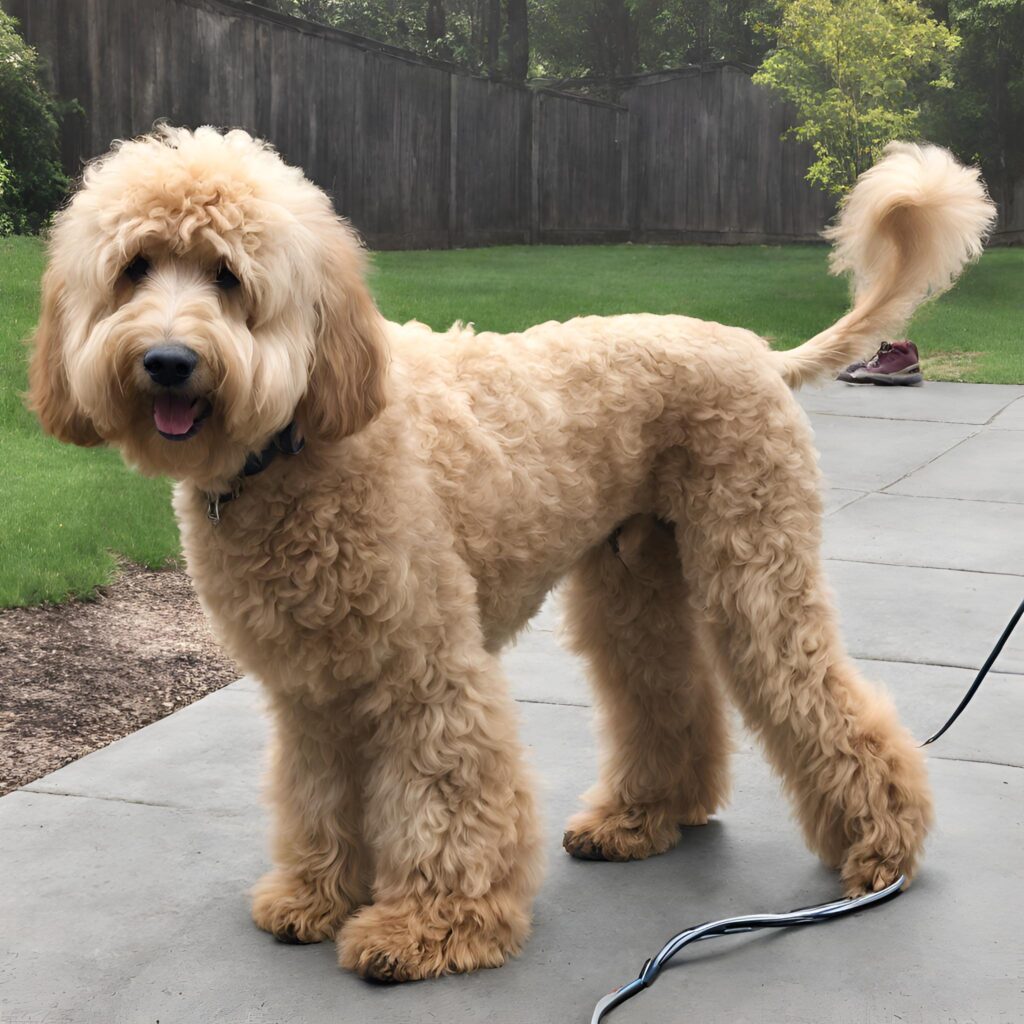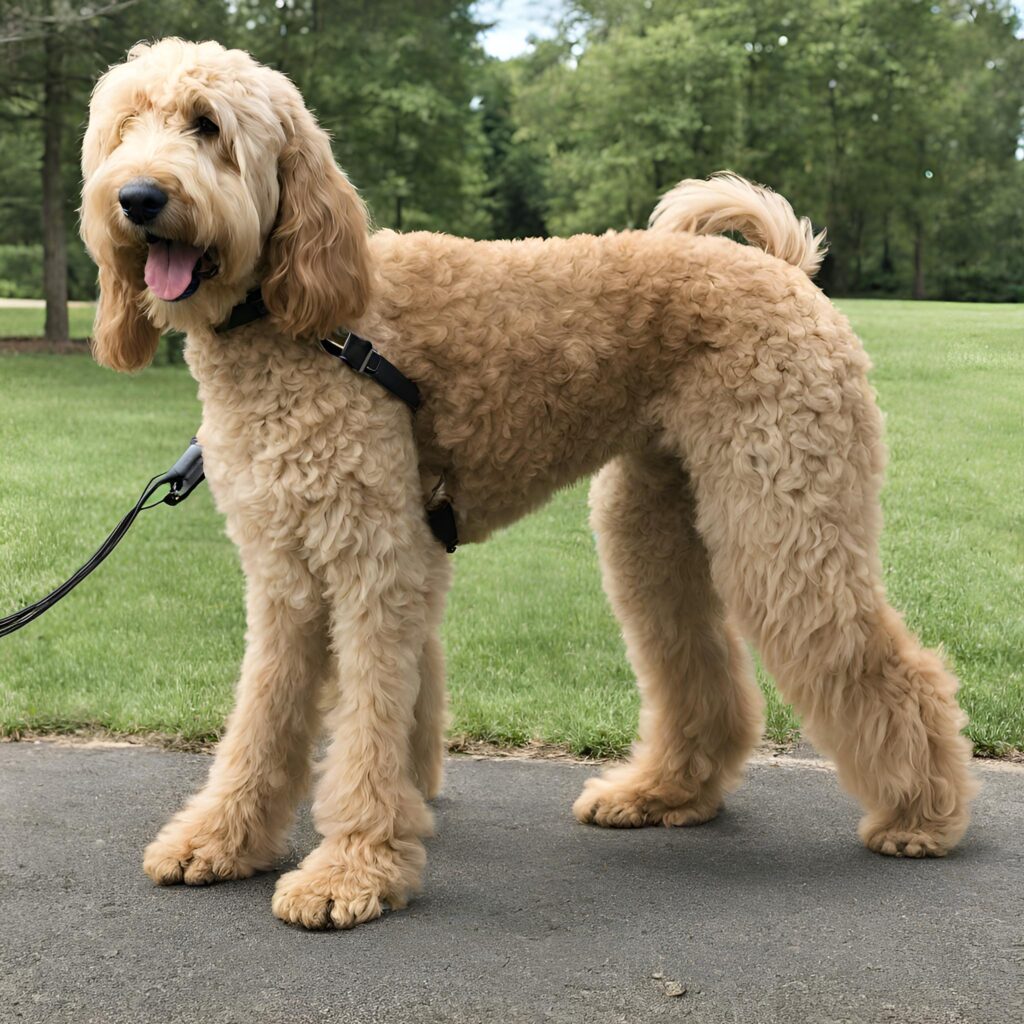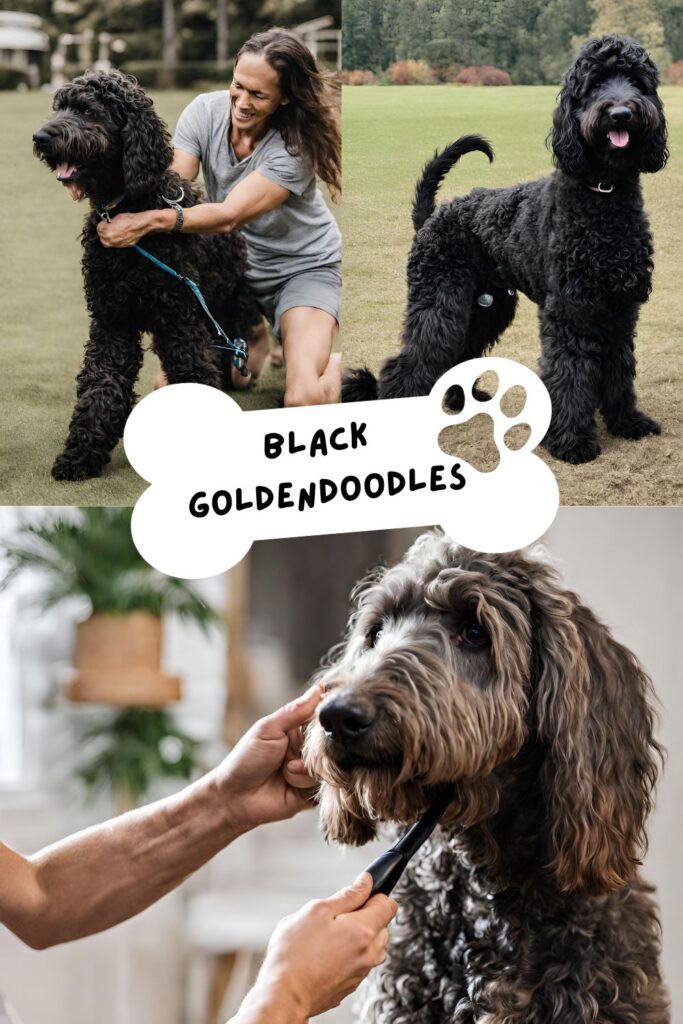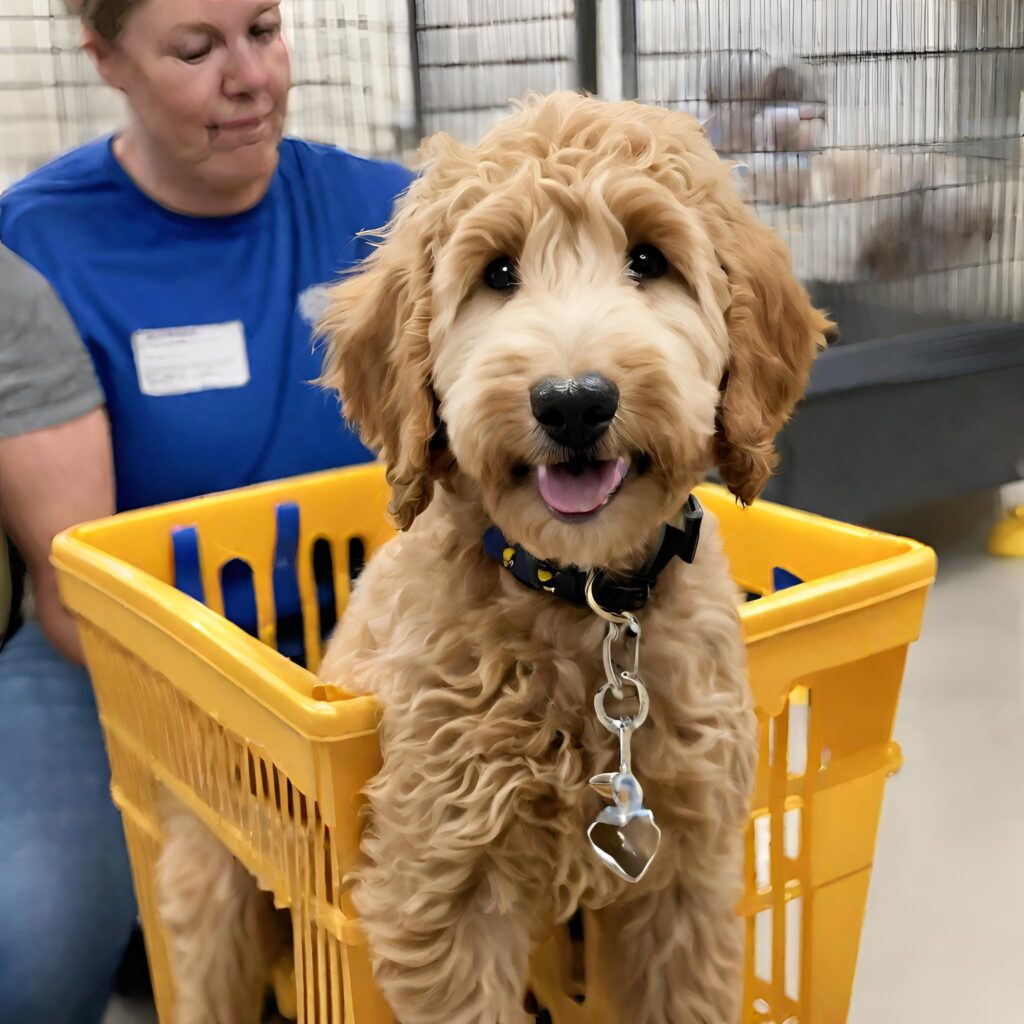Goldendoodle Lifespan: 10 Ways To Improve Quality Of Life

What is the typical Goldendoodle lifespan? A common question arises as prospective and current Golden Doodle owners embark on their journey with these lovable companions…., In this article, we will explore the factors influencing Golden Doodle life expectancy, key considerations for their well-being, and tips for ensuring a long, happy life for your furry friend.
Understanding the Goldendoodle Mix:

The Goldendoodle, a cross between two popular breeds known for their intelligence and friendly nature, inherits a blend of characteristics from both parent breeds. While Golden Retrievers typically have a life span of around 10 to 12 years, and Poodles often live between 12 to 15 years, the life span of a Golden Doodle can vary based on several factors.
On average, Golden Doodles have a lifespan of around 10 to 15 years. However, the actual lifespan can be influenced by factors such as genetics, overall health, diet, exercise, and veterinary care.
1. Genetic Influences:
Like all living beings, genetics play a significant role in determining a Goldendoodles life span. Health issues prevalent in the parent breeds, such as hip dysplasia or certain eye conditions, may impact the overall well-being of the crossbreed.
2. Size Matters:
The size of a Goldendoodle can vary depending on whether it is a miniature, medium, or standard size. Generally, smaller dogs tend to have longer life spans than larger breeds. Miniature and medium-sized Goldendoodles may experience fewer joint and mobility issues than their larger counterparts. Our blog post The Goldendoodle Size: 5 Amazing Facts about the Goldendoodle Size we highlighted various aspects ofthe Goldendoolde size,check it out formore information
3. Nutrition and Exercise:
Proper nutrition and regular exercise are crucial factors in ensuring the health and longevity of any dog. Goldendoodles thrive on a balanced diet that meets their nutritional needs, and regular exercise helps maintain a healthy weight, reducing the risk of obesity-related health problems. In the blog post: Best Foods for Goldendoodles: Discover 5 Tasty Treats for Goldendoodles of all Ages, We talked about the dietry needs of your goldendoolde, according to age, dont be shy to checkit out
4. Regular Veterinary Check-Ups:
Routine veterinary check-ups are essential for monitoring your Goldendoodle’s health. Early detection of potential issues allows for timely intervention, increasing the likelihood of a longer, healthier life.
5. Grooming and Coat Maintenance:
The Goldendoodle’s hypoallergenic coat requires regular grooming to prevent matting and maintain overall hygiene. Proper coat care contributes to the dog’s comfort and helps identify skin issues or abnormalities during grooming sessions. To learn more about Goldendoodle grooming tips and tricks, check outthis blog post: Goldendoodle Shedding: 10 Fascinating Ways to Manage Shedding
6. Mental Stimulation:
Both Golden Retrievers and Poodles are intelligent breeds, and Golden Doodles inherit this trait. Mental stimulation through activities, interactive toys, and training not only keeps them happy but can also contribute to cognitive health as they age.
7. Dental Health:
Dental care is often overlooked but is crucial for a dog’s overall well-being. Regular teeth brushing, dental treats, and toys can help prevent dental issues that may impact the dog’s quality of life.
Will Training and Exercise Improve my Goldendoodle Lifespan?
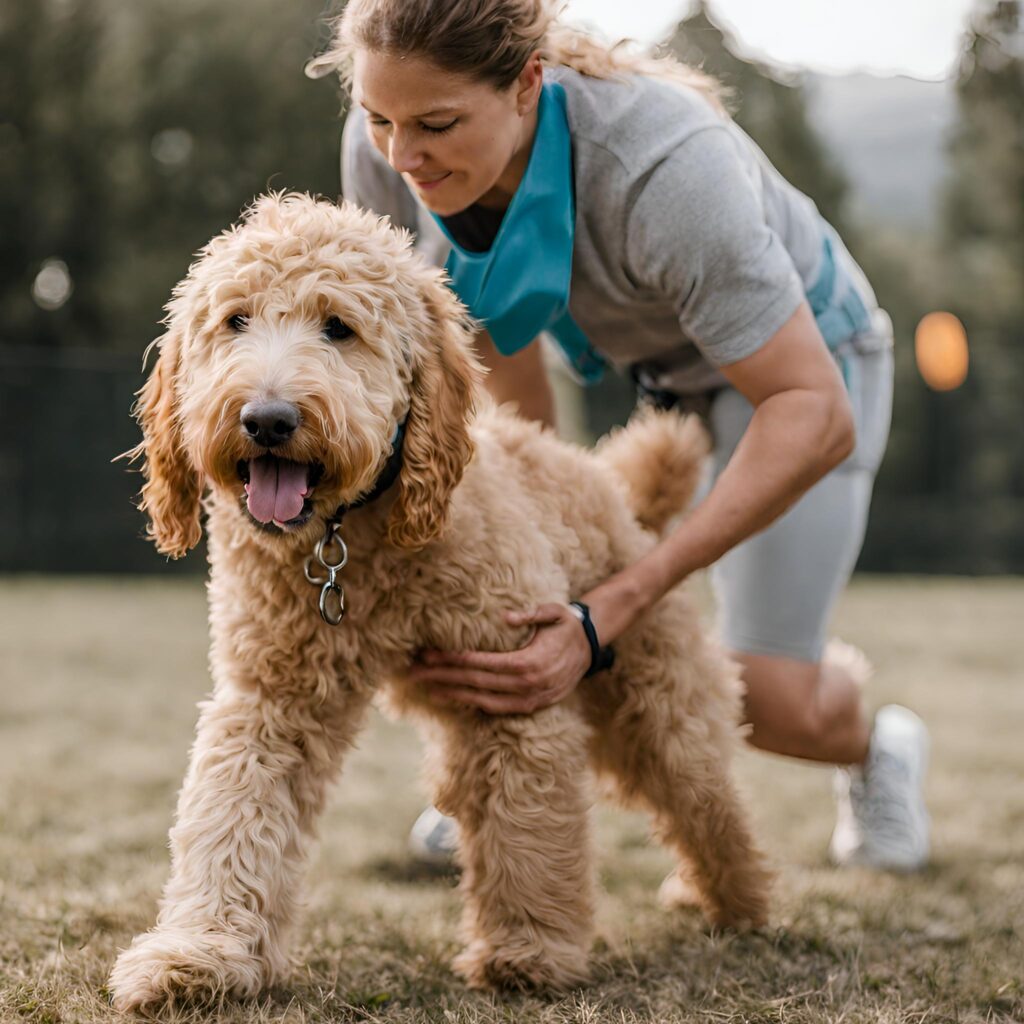
As the proud owner of a Goldendoodle, you’ve likely witnessed the boundless energy and playful spirit that characterize these charming crossbreeds.
Beyond their endearing qualities, the life span of your Goldendoodle can be significantly influenced by two key factors: training and fitness. In this article, we’ll explore how a well-rounded approach to training and fitness can contribute to the overall health, happiness, and longevity of your four-legged friend.
1. Physical Exercise for a Healthier Heart and Body:
Golden Doodles, with their roots in active parent breeds, thrive on regular physical exercise. Engaging your dog in activities such as daily walks, jogging, or play sessions not only helps maintain a healthy weight but also promotes cardiovascular fitness. A well-exercised dog is less prone to obesity-related health issues and benefits from improved muscle tone and joint health.
2. Mental Stimulation for Cognitive Well-being:
Golden Doodles are known for their intelligence, and mental stimulation is just as important as physical exercise. Incorporating training sessions, puzzle toys, and interactive play not only keeps your dog mentally sharp but also enhances the bond between you and your furry companion. Mental stimulation contributes to a more enriched and fulfilling life, potentially delaying cognitive decline as your Golden Doodle ages.
3. Training Builds a Well-Behaved and Happy Dog:
Proper training is not just about teaching commands; it’s about fostering good behavior and ensuring your Golden Doodle is a joy to be around. Basic obedience training and socialization from an early age lay the foundation for a well-behaved dog that can participate in various activities, creating a positive and harmonious relationship between you and your pet.
4. Fitness Tailored to Size and Age:
Golden Doodles come in different sizes, and tailoring their fitness routine to their size and age is crucial. While younger and more active dogs may benefit from vigorous activities, older or smaller Golden Doodles may require gentler exercises to protect their joints. Consult with your veterinarian to create a fitness plan that suits your dog’s individual needs.
5. Preventing Behavioural Issues Through Exercise:
Adequate exercise is not only about physical health but also plays a vital role in preventing behavioral issues. A tired dog is less likely to engage in destructive behaviors born out of boredom or excess energy. Regular exercise can contribute to a calm and content demeanor, reducing the risk of behavioral problems that could impact your dog’s overall well-being.
6. Weight Management for Longevity:
Obesity is a common health concern in dogs that can lead to various ailments, including diabetes, joint problems, and cardiovascular issues. Incorporating a balanced diet along with a consistent exercise routine is essential for weight management and contributes to a longer, healthier life for your Golden Doodle.
Average Goldendoodle Lifespan: Nurturing Longevity and Quality of Life
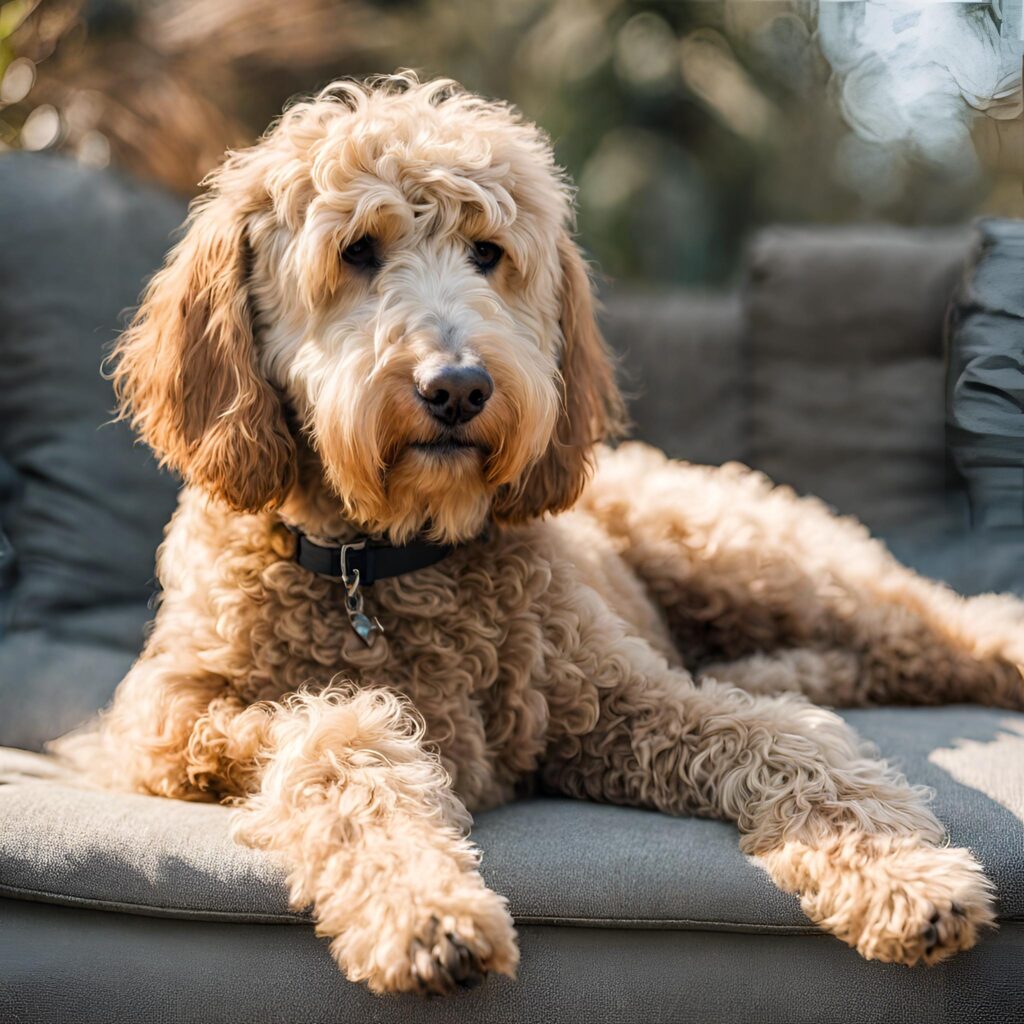
Goldendoodles, the delightful crossbreed of Golden Retrievers and Poodles, bring joy and companionship to countless households. As responsible and caring owners, understanding the factors that influence their lifespan and implementing strategies to extend their life is essential. In this comprehensive guide, we will explore the typical Goldendoodle Lifespan, the factors affecting their longevity, and proactive measures to ensure a healthy and vibrant life for your furry friend.
1. Typical Goldendoodles Lifespan:
The Goldendoodle lifespan can vary based on factors such as genetics, size, and overall health. On average, Golden Doodles can live between 10 to 15 years, with smaller sizes often experiencing longer lifespans than larger ones. Providing proper care and attention to their specific needs can contribute significantly to their overall well-being and longevity.
2. Genetic Influences on Lifespan:
The genetic makeup of a Goldendoodle is a crucial determinant of their lifespan. While crossbreeding can contribute to genetic diversity, it’s essential to be aware of potential health issues inherited from their parent breeds, such as hip dysplasia, certain eye conditions, and heart problems. Responsible breeding practices that prioritize health screenings and genetic testing can contribute to a longer and healthier life.
3. Nutrition for Optimal Health:
A well-balanced and nutritious diet is fundamental to the health and longevity of any dog. Goldendoodles benefit from high-quality dog food that meets their specific dietary requirements. Consult with your veterinarian to ensure that their diet aligns with their age, size, and activity level. Regular veterinary check-ups can help monitor their nutritional needs as they age.
4. Regular Exercise and Mental Stimulation:
Engaging your Goldendoodle in regular physical exercise and mental stimulation is vital for their overall health. This not only helps maintain a healthy weight but also promotes cardiovascular fitness, joint health, and cognitive well-being. Tailor the exercise routine to their age, size, and energy level, ensuring a balance between physical and mental activities.
5. Routine Veterinary Check-Ups:
Regular veterinary check-ups are instrumental in catching potential health issues early on. These appointments allow the vet to monitor your Goldendoodle’s overall health, address concerns, and provide preventive care. Vaccinations, dental check-ups, and screenings for common breed-specific conditions contribute to a proactive approach to their well-being.
6. Dental Care for Longevity:
Dental health is often overlooked but is crucial for a dog’s overall longevity. Poor dental hygiene can lead to various health issues, including heart problems. Regular teeth brushing, dental treats, and toys can help maintain good oral health.
7. Maintaining a Healthy Weight:
Obesity is a significant risk factor for various health issues in dogs. Controlling your Goldendoodle’s weight through proper nutrition and regular exercise is essential. Consult with your veterinarian to establish a suitable diet and exercise plan, especially as they age and their metabolism changes.
8. Grooming and Skin Care:
The hypoallergenic coat of a Goldendoodle requires regular grooming to prevent matting and skin issues. Regular grooming sessions also provide an opportunity to check for any lumps, bumps, or changes in the skin that may require veterinary attention.
9. Emotional Well-being and Socialization:
Dogs thrive on companionship and social interaction. Ensuring that your Golden Doodle is emotionally fulfilled and well-socialized contributes to their overall happiness and can positively impact their health. Provide a loving and stimulating environment to support their emotional well-being.
10. Quality of Life in the Senior Years:
As your Goldendoodle enters their senior years, adjustments to their care may be necessary. This can include modifying their diet, providing joint supplements, and adapting their exercise routine to accommodate any mobility issues. Providing a comfortable and supportive environment, including soft bedding and easy access to water, contributes to their quality of life.
To read more about this topic, visit our blog post: Best Foods for Goldendoodles: Discover 5 Tasty Treats for Goldendoodles of all Ages
Health Issues
Goldendoodles, like many dog breeds, may be prone to certain health issues. It’s essential for prospective owners to be aware of potential health concerns and work with reputable breeders who prioritize responsible breeding practices. Keep in mind that not all individual dogs will experience these issues, and proper care, nutrition, and regular veterinary check-ups can contribute to a healthier life. Common health issues for Goldendoodles include:
1. Hip Dysplasia:
– A genetic condition where the hip joint doesn’t fit properly into the hip socket. It can lead to arthritis and lameness over time. Regular exercise, a balanced diet, and maintaining a healthy weight can help manage the risk.
2. Elbow Dysplasia:
– Similar to hip dysplasia, this condition affects the elbow joint. It can cause pain, lameness, and arthritis. Responsible breeding practices aim to reduce the risk of dysplasia.
3. Progressive Retinal Atrophy (PRA):
– A group of genetic diseases that lead to the degeneration of the retina, potentially leading to blindness. Responsible breeders conduct eye screenings to minimize the risk.
4. Ear Infections:
– Due to their floppy ears, Golden Doodles may be prone to ear infections. Regular cleaning and proper ear care can help prevent issues.
5. Allergies:
– Some Goldendoodles may be prone to skin allergies. Common allergens include certain foods, environmental factors, or contact allergens. Identifying and managing allergies may require veterinary assistance.
6. Hypothyroidism:
– An underactive thyroid gland can lead to weight gain, lethargy, and skin problems. Regular veterinary check-ups can help diagnose and manage thyroid issues.
7. Heart Disease:
– Some Golden Doodles may be susceptible to heart conditions, such as mitral valve disease. Regular veterinary examinations and a healthy lifestyle contribute to heart health.
8. Von Willebrand’s Disease:
– A blood clotting disorder that can lead to excessive bleeding. Responsible breeders may conduct tests to identify carriers of this genetic condition.
9. Patellar Luxation:
– A condition where the kneecap dislocates from its normal position. It can cause lameness and discomfort. Surgical intervention may be necessary in severe cases.
10. Gastric Dilatation Volvulus (Bloat):
– Large and deep-chested breeds, including some Goldendoodles, may be more prone to bloat. This is a serious and potentially life-threatening condition that requires immediate veterinary attention.
Regular veterinary check-ups, maintaining a healthy diet, providing regular exercise, and addressing any health concerns promptly contribute to the overall well-being of a Golden Doodle. Prospective owners should work with reputable breeders who prioritize the health and genetics of their breeding dogs to reduce the risk of hereditary conditions.
As dogs age, they may exhibit various signs indicating the natural aging process. While individual dogs age differently based on factors like breed and overall health, common signs of aging in dogs include:
Common signs of aging
1. Changes in Coat and Skin:
– Graying or whitening of the fur, thinning of the coat, and changes in skin elasticity are common signs of aging.
2. Decreased Activity Level:
– Older dogs may become less active and energetic. They may not engage in vigorous play as much and may prefer more relaxed activities.
3. Weight Changes:
– Weight gain or loss can occur in senior dogs. Changes in metabolism and activity levels may affect their body condition.
4. Joint Stiffness and Mobility Issues:
– Arthritis and joint issues may become more noticeable, leading to stiffness, difficulty rising, or a reluctance to climb stairs.
5. Changes in Sleep Patterns:
– Older dogs may sleep more during the day and become more restless at night. Changes in sleep patterns can be a normal part of aging.
6. Dental Issues:
– Dental problems, such as tooth decay or gum disease, may become more prevalent. Regular dental care is essential for senior dogs.
7. Vision and Hearing Changes:
– Diminished eyesight and hearing can occur. Cloudiness in the eyes or a lack of responsiveness to sounds may indicate sensory changes.
8. Increased Water Consumption and Urination:
– Changes in kidney function can lead to increased thirst and urination. These changes may indicate conditions like kidney disease.
9. Cognitive Changes:
– Cognitive dysfunction, similar to dementia in humans, can affect older dogs. Signs may include disorientation, confusion, or changes in behavior.
10. Behavioral Changes:
– Older dogs may exhibit changes in behavior, such as increased vocalization, anxiety, or changes in social interactions.
11. Reduced Immune Function:
– The immune system weakens with age, making senior dogs more susceptible to illnesses and infections.
12. Digestive Changes:
– Senior dogs may experience digestive issues, including a reduced ability to process certain nutrients or an increased sensitivity to certain foods.
13. Increased Sensitivity to Temperature:
– Older dogs may become more sensitive to extreme temperatures. They may struggle to regulate their body temperature efficiently.
14. Lumps and Bumps:
– The development of benign lumps or bumps, known as lipomas, is common in aging dogs. Regular veterinary check-ups can help monitor these.
Regular veterinary check-ups are crucial to monitor the health of aging dogs and address any concerns promptly. Adjustments to diet, exercise, and veterinary care can help manage the aging process and ensure the well-being of senior dogs.
How long do Goldendoodles live
The lifespan of a dog, including Goldendoodles, can vary based on factors such as genetics, size, overall health, and care provided. On average, Goldendoodles have a lifespan of 10 to 15 years. Small-sized Goldendoodles may live longer than their larger counterparts. Responsible breeding practices, a balanced diet, regular exercise, routine veterinary care, and a loving home environment contribute to a dog’s longevity. As dogs age, they may require specialized care to address the challenges associated with aging, including potential health issues. Providing attentive and proactive healthcare can enhance the quality of life and contribute to a fulfilling and happy senior stage for Goldendoodles.
Environmental factors
Environmental factors play a significant role in a dog’s overall well-being and can influence their health and lifespan. Here are key environmental factors that can impact Golden Doodles and other dogs:
1. Living Conditions:
– A clean and safe living environment is essential. Providing shelter, protection from extreme weather conditions, and a comfortable resting place contributes to a dog’s health.
2. Exercise and Activity:
– Regular physical activity is crucial for a dog’s mental and physical well-being. Dogs, including Golden Doodles, benefit from daily walks, playtime, and mental stimulation to maintain a healthy weight and prevent behavioral issues.
3. Nutrition:
– A balanced and nutritious diet is fundamental to a dog’s health. Providing high-quality dog food that meets their specific dietary needs, along with access to fresh water, supports overall well-being.
4. Veterinary Care:
– Regular veterinary check-ups, vaccinations, and preventive care are essential environmental factors. Early detection and treatment of health issues contribute to a longer and healthier life.
5. Socialization:
– Dogs are social animals, and a positive social environment contributes to their mental health. Proper socialization with people, other animals, and varied environments helps prevent behavioral problems.
6. Stress Levels:
– Minimizing stress is important for a dog’s overall health. Changes in the environment, loud noises, or disruptions in routine can impact stress levels. Providing a stable and secure environment is beneficial.
7. Toxic Substances:
– Keeping harmful substances out of a dog’s reach is crucial. Dogs may be exposed to toxic plants, foods, chemicals, or medications, and minimizing these risks in the environment is essential.
8. Grooming and Hygiene:
– Regular grooming, including brushing, nail trimming, and dental care, contributes to a dog’s overall well-being. Maintaining proper hygiene helps prevent skin issues and infections.
9. Temperature and Weather:
– Extreme temperatures, whether hot or cold, can impact a dog’s health. Providing appropriate shelter, access to shade, and protection from harsh weather conditions is important.
10. Environmental Enrichment:
– Providing mental stimulation through toys, puzzles, and varied activities enriches a dog’s environment. Mental stimulation is vital for preventing boredom and promoting a healthy mindset.
By addressing these environmental factors, dog owners can create a nurturing and supportive living environment for their Golden Doodles, promoting optimal health and longevity. Tailoring care to the specific needs of individual dogs ensures a happy and fulfilling life for these beloved pets.
Veterinary practices and care
Veterinary practices and care significantly impact a dog’s lifespan and overall well-being. Here are ways in which veterinary practices contribute to the health and longevity of Golden Doodles and other dogs:
1. Preventive Care:
– Regular veterinary check-ups and preventive care, including vaccinations and parasite control, help detect and address potential health issues before they become serious. This proactive approach contributes to a longer and healthier life.
2. Early Detection and Treatment:
– Timely identification of health problems allows for early intervention and treatment. Veterinary professionals can conduct screenings, tests, and examinations to detect issues such as dental problems, joint conditions, or organ dysfunction.
3. Nutritional Guidance:
– Veterinarians provide advice on proper nutrition tailored to a dog’s age, size, and health conditions. A balanced diet supports overall health, prevents obesity, and addresses specific dietary needs, contributing to longevity.
4. Dental Care:
– Dental health is crucial for a dog’s well-being. Regular dental check-ups and cleanings, as well as guidance on at-home dental care, help prevent dental issues that can impact a dog’s overall health.
5. Behavioral Counseling:
– Veterinarians can offer guidance on managing and addressing behavioral issues. Behavioral counseling can contribute to a harmonious relationship between dogs and their owners, reducing stress and enhancing overall well-being.
6. Senior Care:
– As dogs age, their veterinary needs may change. Regular senior wellness checks, blood work, and diagnostic tests help monitor and manage age-related conditions, ensuring a comfortable and healthy senior stage.
7. Diagnostic Imaging:
– Advanced diagnostic tools, such as X-rays and ultrasounds, enable veterinarians to assess internal health, diagnose conditions, and plan appropriate treatment. This technology aids in providing comprehensive care.
8. Emergency and Critical Care:
– Access to emergency veterinary care is crucial for addressing sudden health crises. Quick and effective intervention during emergencies can significantly impact a dog’s chances of recovery and survival.
9. Surgical Interventions:
– When necessary, surgical procedures performed by skilled veterinarians can address various health issues, including orthopedic conditions, tumors, and injuries. These interventions can improve a dog’s quality of life.
10. Geriatric Care:
– Tailored care for senior dogs, including specialized diets, joint supplements, and pain management, ensures that their unique needs are met during the aging process, contributing to a more comfortable and extended life.
By partnering with veterinarians and following their guidance, dog owners can actively contribute to the well-being and longevity of their Golden Doodles. Regular veterinary care, preventive measures, and a collaborative approach to health management are key factors in promoting a healthy and fulfilling life for these beloved pets.
life stages of goldendoodle
quick facts about goldendoodle
how to know the age of your goldendoodle
most common cause of death for goldendoodle
goldendoodle lifespan compared to other dog breeds
how often should goldendoodle exercise
Conclusion:
Nurturing the longevity of your Golden Doodle involves a holistic approach that addresses their physical, mental, and emotional well-being. By incorporating proper nutrition, regular exercise, preventive veterinary care, and attention to their specific needs, you can enhance the quality of their life and enjoy many happy years together. As a devoted owner, your commitment to proactive and attentive care ensures that your Golden Doodle thrives throughout their life, sharing love and companionship for many joyful years to come.
In the grand tapestry of a Golden Doodle’s life, training and fitness form crucial threads that weave together a vibrant and fulfilling existence. By prioritizing physical and mental well-being through regular exercise and positive reinforcement training, you’re not just enhancing your dog’s quality of life today but also investing in a longer, happier future together. So, lace up those sneakers, grab the leash, and embark on a journey of health and happiness with your energetic Golden Doodle companion.




